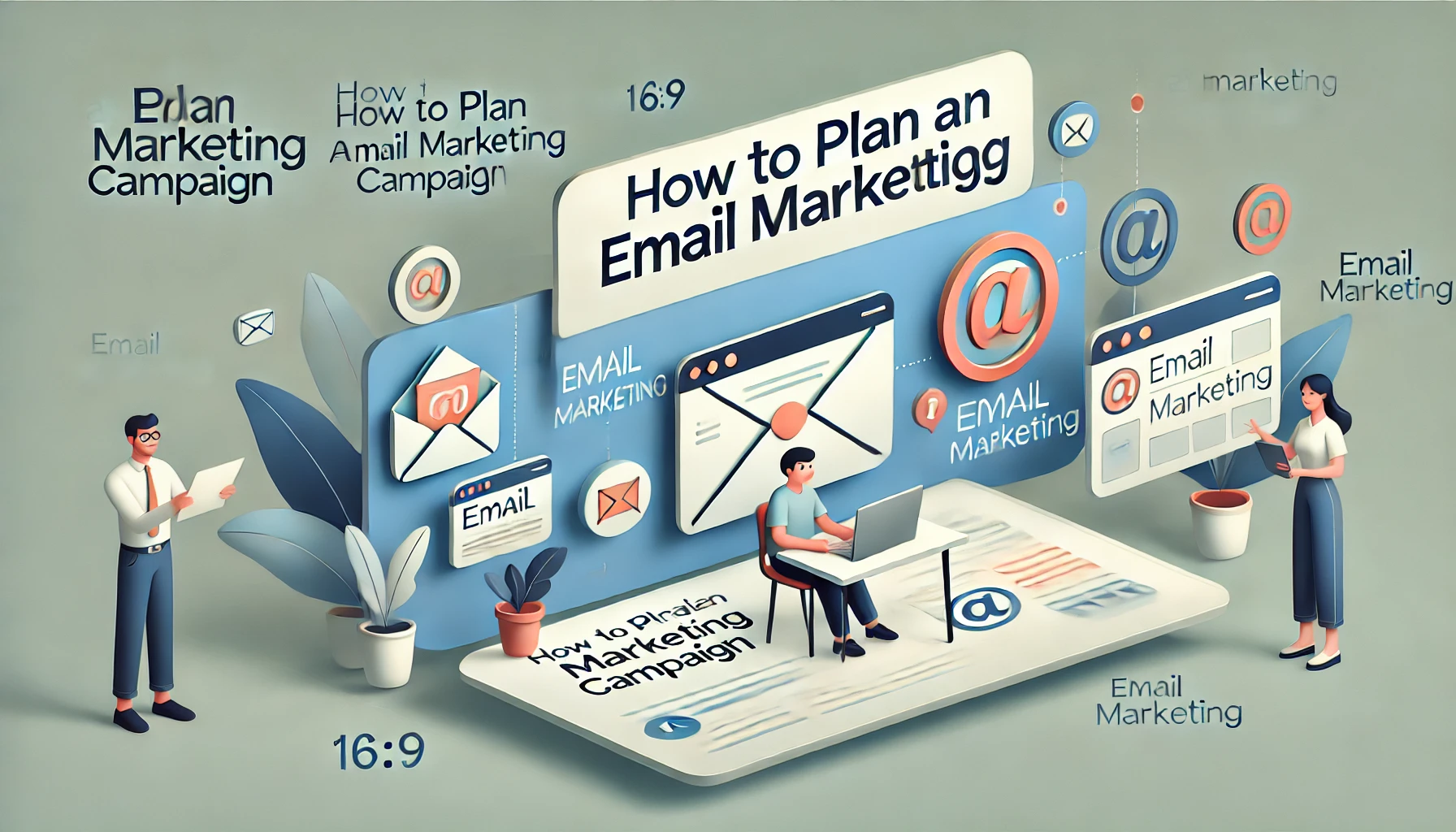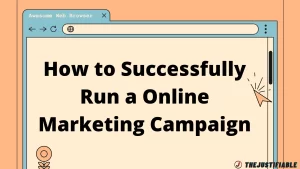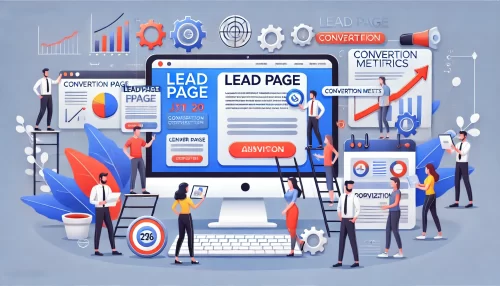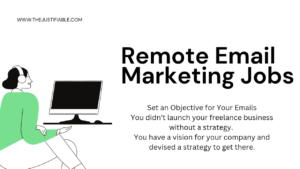Table of Contents
Are you wondering how to plan an email marketing campaign that captivates your audience and drives conversions? An effective email marketing campaign requires strategic planning, goal setting, audience segmentation, and engaging content.
This guide will cover essential steps to help you create an impactful email marketing campaign from start to finish.
Define Your Email Marketing Campaign Goals
Setting clear goals is essential when you plan an email marketing campaign. Your objectives will help guide each decision, from content creation to audience targeting. A focused approach ensures your campaign reaches the right people and meets your business goals.
Set Clear, Achievable Objectives
Your email marketing campaign will benefit from specific, realistic objectives. I recommend setting measurable goals, such as boosting subscriber numbers or increasing click-through rates. With clear targets, you can gauge progress and refine your strategy for better outcomes.
A clear objective can also streamline campaign planning, making each step purposeful. Instead of vague goals, focus on specific outcomes, such as improving engagement by 15% in three months. This approach keeps you focused, adaptable, and motivated.
Moreover, clear objectives guide team efforts and foster a collaborative environment. When everyone knows the goal, it’s easier to align resources effectively. Shared clarity on goals prevents missteps and encourages team accountability.
Lastly, measurable goals offer concrete benchmarks for evaluation. Tracking progress isn’t just about hitting numbers; it’s about learning from your results. Use each campaign to identify strengths and address weak spots, strengthening your future efforts.
Align Campaign Goals with Business Goals
It’s vital to sync campaign objectives with overarching business goals. For instance, if your aim is revenue growth, prioritize lead generation over general engagement. Each campaign step should contribute meaningfully to larger business outcomes, making your strategy impactful.
Aligning goals with business priorities creates a unified strategy that reinforces your brand’s mission. I advise reviewing your goals periodically, ensuring every email resonates with your core business direction. This alignment boosts not only sales but also brand consistency.
Another advantage of alignment is resource optimization. When email goals support business objectives, resource allocation becomes streamlined. Your budget, time, and efforts are used more effectively, preventing wasted resources on unfocused activities.
Finally, alignment enhances the value of performance data. Measuring campaign results against business outcomes provides actionable insights. Each email’s success directly reflects your business impact, making data-driven adjustments straightforward and meaningful.
Determine Key Performance Indicators (KPIs)
KPIs are crucial to tracking campaign progress. I suggest selecting KPIs that closely reflect your goals, such as open rates for engagement or conversion rates for revenue growth. Monitoring these metrics enables timely adjustments and goal-oriented decision-making.
Key performance indicators provide a roadmap for measuring success. With metrics in place, you can assess each campaign phase, identifying what resonates with your audience. Consistent KPI tracking helps you refine future emails, increasing engagement and conversions.
Furthermore, KPIs serve as motivators for ongoing improvement. By observing trends in metrics, you can respond to audience behavior shifts. Flexibility in adapting KPIs to changing needs enhances your campaign’s relevance and long-term effectiveness.
Lastly, KPIs clarify ROI by showing the direct impact of your campaign. Metrics such as revenue per email or subscriber growth allow a concrete analysis of campaign profitability. Through KPIs, your email marketing transforms into a measurable, valuable asset.
Identify And Segment Your Target Audience

Knowing your audience is the bedrock of a successful email marketing campaign. Segmentation enables you to tailor content to distinct audience segments, making each email relevant and engaging. A targeted approach boosts open rates, engagement, and overall campaign effectiveness.
Conduct Audience Research
To effectively plan an email marketing campaign, start with in-depth audience research. Look into demographics, preferences, and behavior patterns. Understanding these aspects enables you to design messages that resonate and meet their specific needs and interests.
Audience research also uncovers pain points, guiding content relevance. When you address challenges your audience faces, they’re more likely to engage. I suggest using surveys or analytics tools to gain direct insights, ensuring your content feels personalized and impactful.
Moreover, audience insights help identify the optimal email frequency. By understanding your audience’s preferences, you can avoid overwhelming them while maintaining consistent communication. This balance keeps your messages welcomed rather than ignored.
Finally, research helps you adapt to evolving trends. Continuous audience research lets you adjust content to keep up with changing preferences or habits. Staying in tune with your audience positions your campaign for consistent success.
Create Buyer Personas
Creating buyer personas allows a focused approach to content creation. Each persona represents a segment of your audience, guiding tailored messaging. I recommend developing detailed personas, covering demographics, motivations, and challenges for targeted, meaningful emails.
Personas also help prioritize content topics. By focusing on topics that align with personas’ needs, your emails become more relevant and impactful. This strategy strengthens engagement, building a connection that feels personalized to each subscriber.
Another benefit is efficient resource allocation. When you have personas, you know where to concentrate resources, avoiding scattershot approaches. This efficiency improves content quality and relevance, as each email speaks directly to a specific audience group.
Lastly, personas inform CTA design, enhancing click-through rates. When CTAs align with persona-driven motivations, readers are more likely to act. Persona-based CTAs improve campaign outcomes, creating an experience that feels custom-tailored to each segment.
Segment Your Email List for Precision
Segmenting your email list amplifies campaign effectiveness by delivering targeted messages. Break down your list by criteria such as location, purchase history, or behavior. Each segment receives emails crafted to meet its unique interests and engagement patterns.
Segmentation boosts engagement by sending the right content to the right people. Instead of a blanket message, your campaign speaks directly to each group’s needs. I suggest experimenting with multiple segmentation strategies to discover what drives the highest engagement.
Moreover, segmentation refines timing. Some audiences respond better to morning emails, while others prefer evening. By adjusting send times per segment, you maximize open rates, increasing the chance that each email is read and acted upon.
Lastly, segmentation supports ongoing personalization, a key to building loyalty. With targeted messages, you establish a relationship that goes beyond generic marketing, fostering a sense of individual connection. This approach turns subscribers into long-term brand advocates.
Craft Compelling Campaign Content
Creating engaging email content is crucial for capturing attention and driving action. By focusing on subject lines, personalized content, and clear calls-to-action, your campaign can become a powerful tool that resonates with your audience and increases engagement.
Write Engaging Subject Lines
An engaging subject line is your first opportunity to capture attention. I suggest keeping it brief yet intriguing, with a hint of what’s inside. Aim to create curiosity or a sense of urgency, encouraging recipients to open the email.
Using action words in subject lines can boost open rates. Phrases like “discover,” “explore,” or “don’t miss” give readers a reason to click. Keep it relevant and specific to your message, creating an immediate connection with the reader’s needs.
Personalized subject lines add a layer of engagement. Try using the recipient’s name or a detail relevant to them, making the email feel tailor-made. Personalized subject lines build trust, leading to higher open and engagement rates.
Avoiding overly promotional language can improve results. Overuse of terms like “sale” or “discount” may feel generic. Instead, offer value-driven language, emphasizing unique benefits or insights your email provides, creating a more authentic connection.
Develop Valuable, Personalized Content
Your content should speak directly to your audience’s needs. I believe that personalizing content with relevant details or addressing pain points makes your email impactful. Tailoring each section increases the likelihood of resonating with individual subscribers.
To enhance engagement, ensure each email segment provides value. Content that offers solutions or new insights helps build loyalty. Readers are more likely to trust you when emails address real challenges and offer tangible benefits, enhancing credibility.
Emphasizing quality over quantity is key. Instead of overwhelming with information, focus on concise, meaningful content. By delivering bite-sized, valuable insights, your emails become easier to read, and subscribers are more likely to stay engaged.
Consider the tone and voice as well. An approachable, friendly tone encourages interaction. Write as if speaking directly to the reader, making them feel valued and understood. This personal approach fosters a strong connection with your audience.
Design a Clear Call-To-Action (CTA)
A well-crafted CTA guides readers to the next step. I suggest making your CTA concise and action-oriented, with phrases like “Start now” or “Learn more.” A strong CTA provides a clear direction, increasing click-through rates and engagement.
Positioning the CTA effectively boosts visibility. Place it near valuable content or toward the end of the email, where readers are ready to act. Thoughtful placement and design enhance CTA effectiveness, making it more likely to drive results.
The CTA should be relevant to the email’s content. For instance, a “Subscribe for updates” CTA works well in informational emails. I advise aligning each CTA with the content focus, ensuring it feels natural and directly connected to the message.
Using contrasting colors or bold fonts makes your CTA stand out. A visually distinct CTA captures attention and prompts action, especially on mobile devices. Simple but effective design choices make it easy for readers to find and engage with the CTA.
Choose The Right Email Marketing Tools

Selecting the right tools is essential for managing and optimizing your email marketing campaign. With automation platforms, CRM integrations, and analytics tools, you can streamline processes, enhance targeting, and accurately track results for continuous improvement.
Explore Automation Platforms
Automation tools simplify repetitive tasks, allowing you to focus on strategy. I recommend exploring options that offer robust automation capabilities, such as scheduling, follow-ups, and list management. Automation streamlines workflows, helping maintain a consistent campaign schedule.
Look for platforms that support audience segmentation. Segmented automation allows you to send tailored content to each group, boosting relevance. This feature is key to personalized email marketing, ensuring the right message reaches the right audience.
Automation tools with A/B testing options are invaluable. Testing different versions of an email can reveal what resonates best with your audience. I advise using this data to refine content, improving effectiveness with each campaign iteration.
Choose a platform with detailed analytics. Monitoring performance metrics within your automation tool offers quick insights into open and click rates. This data helps identify which strategies work best, supporting continuous optimization.
Analyze CRM Integration Options
CRM integrations allow seamless data flow between email and customer management. Integrated systems keep contact details, purchase history, and engagement data accessible, helping you target emails more precisely. I suggest choosing a CRM that aligns with your email platform for ease.
With CRM integrations, you can personalize interactions based on customer history. Personalized outreach builds rapport, enhancing campaign success. I find that emails feel more relevant and timely when backed by customer-specific insights from a CRM.
CRM systems simplify list segmentation, too. They let you categorize contacts based on behavior or demographics, allowing for highly targeted campaigns. Effective segmentation with CRM data keeps each email relevant, boosting engagement and retention.
Lastly, CRM-linked analytics reveal the customer journey. Tracking how email engagement relates to broader customer interactions provides comprehensive insights. These insights support long-term strategy, helping you refine customer interactions beyond individual campaigns.
Track Metrics with Analytics Tools
Analytics tools provide insights essential for evaluating campaign success. Tools that track open, click, and conversion rates reveal what resonates with your audience. I recommend using analytics data to adjust content, increasing relevance and appeal.
Some analytics tools offer heatmaps, which show where readers click within your email. Heatmaps are useful for optimizing layout and CTA placement, ensuring each email section encourages engagement. Heatmaps give precise insights into user interaction.
Use analytics to monitor unsubscribe rates as well. High unsubscribe rates signal a need to revisit content strategy. By analyzing what drives disengagement, you can refine messages, improving retention and keeping subscribers engaged.
Tracking bounce rates is also valuable. A high bounce rate may indicate list issues or technical problems. Regular monitoring helps maintain email list quality, ensuring your messages reach intended recipients without disruptions.
Design The Perfect Email Structure
An effective email structure enhances readability and engagement. By selecting a functional template, optimizing for various devices, and incorporating visuals, you can create an email that captures attention and encourages readers to act on your message.
Select an Effective Email Template
Choosing the right template sets the tone for your email. I advise selecting a simple, clean layout that highlights key elements. A clear structure guides readers through the content, making information easy to find and encouraging interaction.
Templates should align with brand identity. Consistency in design strengthens brand recognition, building trust over time. A cohesive template design, featuring your brand colors and logo, keeps your emails visually appealing and recognizable.
Consider functionality within the template. Templates that support multiple sections, like text blocks and images, increase flexibility. A modular design lets you adjust content easily, adapting the email to fit specific campaign goals without sacrificing style.
A responsive template is crucial for mobile users. With many subscribers viewing emails on mobile, I suggest using a mobile-friendly template that adjusts to screen size. This ensures your email looks professional on any device, boosting engagement.
Optimize For Mobile And Desktop
Optimizing emails for both mobile and desktop readers expands reach. A responsive design adjusts layouts for any screen size, ensuring content remains accessible. I believe mobile compatibility is essential, given the high percentage of mobile users today.
Simplify visuals for faster load times on mobile. Heavy images can slow loading, frustrating readers. Use compressed images and minimal graphics, improving the user experience and ensuring your message reaches the reader swiftly.
Consider font size for readability. Small text may be challenging on smaller screens, so I recommend slightly larger fonts for mobile readers. Readable text improves engagement, allowing readers to absorb content without difficulty.
Strategic CTA placement enhances mobile usability. Positioning CTAs where they’re easily clickable prevents frustration. Mobile-friendly CTAs improve interaction rates, making it simple for users to engage with your email on any device.
Include Eye-Catching Visuals
Visuals add interest to your email and help convey messages quickly. I suggest using relevant images or infographics to illustrate points and break up text. Visuals capture attention, enhancing overall readability and engagement with your content.
Choose images that reflect your brand style. Consistent visuals create a cohesive look, reinforcing brand identity. Whether using photos or icons, a unified visual approach strengthens recognition and provides a polished look to your emails.
Optimize image size for fast loading. Heavy images can slow down the experience, particularly on mobile. I recommend compressing images before use, preserving quality while ensuring quick display, which keeps readers engaged without delays.
Avoid cluttering with excessive visuals. Striking a balance between text and images enhances focus. Use visuals to support, not overwhelm, your content, ensuring readers are drawn to both the visuals and the essential messages within your email.
Schedule And Test Your Email Campaign
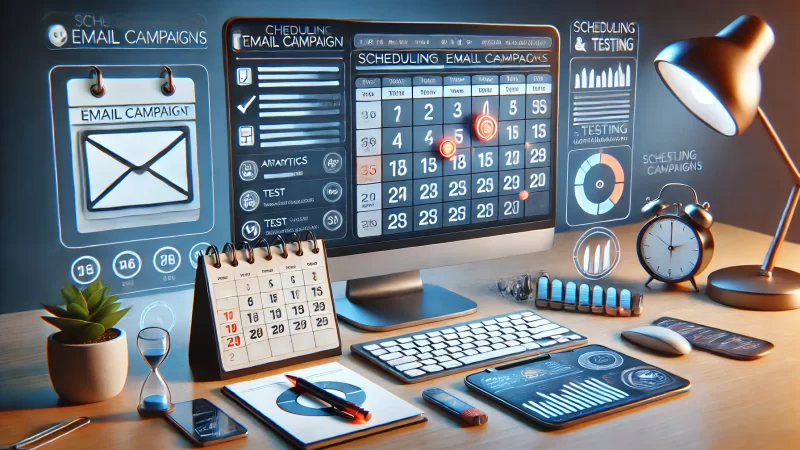
Scheduling and testing your email campaign are crucial steps in maximizing engagement. By determining optimal send times, conducting A/B testing, and ensuring deliverability, you can refine each aspect for better performance and audience reach.
Determine The Best Send Times
Finding the right send time can significantly impact open rates. I recommend experimenting with different days and times, as audience preferences vary. Observing trends in engagement can reveal when your subscribers are most likely to interact with your emails.
Timing affects engagement, so it’s essential to tailor your schedule. For example, B2B audiences may respond better during weekday mornings, while consumer-focused campaigns may succeed on weekends. Adapting timing to audience habits enhances engagement and effectiveness.
Consider segmenting send times by audience behavior. Certain groups may prefer morning emails, while others respond better in the evening. Segmenting send times allows you to connect with each group at their preferred moment, improving interaction rates.
Regularly review send-time performance. As your audience evolves, their engagement habits might shift. Revisiting your timing strategy keeps your campaign in sync with current preferences, maximizing relevance and response rates.
Conduct A/B Testing on Elements
A/B testing helps identify the most effective elements of your campaign. Testing subject lines, CTA placements, or visuals can reveal which variations drive better results. I suggest running small-scale tests first, refining elements before a full launch.
Each test should have a clear focus. For instance, if testing subject lines, keep the body content consistent. This approach isolates the impact of the subject line, providing accurate insights into what attracts opens and clicks.
A/B testing builds data-driven strategies. By observing patterns in audience reactions, you learn what resonates, allowing future emails to be tailored effectively. Regular testing fosters continuous improvement, strengthening engagement over time.
Consider timing for testing as well. Running tests during peak engagement periods ensures accurate results. Testing during low-traffic periods may skew data, so aim for testing when your audience is most active for reliable insights.
Ensure Deliverability and Compliance
Deliverability is crucial for reaching your audience. I advise using verified email addresses, as it reduces bounce rates and enhances sender reputation. Implementing best practices ensures your emails avoid spam filters, reaching subscribers successfully.
Regularly update your email list to maintain quality. Removing inactive subscribers or invalid addresses improves deliverability. A clean list also helps your campaign appear relevant, increasing the chance of engagement with your active audience.
Compliance with regulations like CAN-SPAM is essential. Including an unsubscribe option and valid sender information builds trust and avoids penalties. A compliant email campaign respects subscriber choice and builds a positive brand reputation.
Monitoring deliverability rates can reveal issues early. If bounce or spam rates increase, it may indicate list quality problems. Early intervention helps protect sender reputation, ensuring your emails continue to reach your target audience.
Launch And Monitor Your Campaign
After thorough planning and testing, it’s time to launch your email campaign. Monitoring real-time performance, assessing metrics against KPIs, and gathering subscriber feedback allows you to fine-tune the campaign as it progresses, optimizing results.
Track Performance Metrics in Real-Time
Real-time tracking gives you immediate insights into campaign success. Watching open rates, click-through rates, and other key metrics as they happen lets you adjust your approach if needed, optimizing engagement on the go.
Real-time data allows for responsive adjustments. If engagement is low, you might refine your CTA or tweak subject lines for future emails. Quick, data-informed decisions ensure your campaign adapts effectively to audience behavior.
Consider tracking different metrics for specific goals. For instance, monitor click-throughs if driving website traffic is a priority. This focus ensures each metric aligns with campaign objectives, providing clear insights for targeted improvement.
Regularly reviewing metrics prevents stagnation. Campaigns evolve, and what works at launch may need updates later. By consistently tracking and adjusting, your campaign remains aligned with audience preferences, enhancing overall performance.
Measure Against Established KPIs
KPIs help gauge campaign effectiveness. I recommend setting KPIs such as conversion rates or engagement levels before launch, as they provide a benchmark for evaluating success. Tracking KPIs keeps the campaign focused and goal-oriented.
Aligning KPIs with broader goals improves strategic focus. If your goal is lead generation, prioritize metrics like click-to-conversion rates. This alignment ensures each KPI reflects meaningful progress toward your primary objectives, making tracking purposeful.
KPIs provide insights into areas needing adjustment. If certain KPIs fall short, it signals a need for refinement. Adjusting based on KPI performance lets you target weaknesses, improving campaign effectiveness and engagement over time.
Regular KPI reviews foster ongoing growth. Evaluating KPIs periodically enables proactive improvements, ensuring your campaign consistently meets or exceeds goals. This approach supports a data-driven, adaptable email marketing strategy.
Gather and Analyze Subscriber Feedback
Subscriber feedback reveals valuable insights into campaign performance. Encourage feedback through surveys or direct responses, allowing subscribers to share their experience. This input highlights strengths and areas for improvement, enhancing your approach.
Feedback clarifies content relevance. If subscribers appreciate certain content, it indicates what resonates most. I suggest using this feedback to guide future topics, making your emails more valuable and appealing to your audience.
Subscriber insights inform personalization efforts. Feedback on tone, content, or format helps you tailor future emails more effectively. Personalization based on subscriber input builds stronger connections, leading to higher engagement.
Analyzing feedback trends supports growth. If multiple subscribers suggest similar improvements, it’s worth considering changes. Addressing common requests enhances satisfaction, showing subscribers their input shapes the campaign’s evolution.
Evaluate And Optimize Future Campaigns

Evaluating your campaign’s results is key to long-term success. By assessing performance, identifying areas for improvement, and implementing lessons, you build a stronger foundation for future email campaigns, driving continuous engagement and growth.
Assess Campaign Performance
A comprehensive performance assessment reveals what worked. Reviewing metrics such as open rates, conversion rates, and engagement levels provides a clear picture. This analysis guides your approach, showing which elements drove the most impact.
Compare performance to your initial goals. If you aimed to increase engagement by a certain percentage, see if you met it. This comparison offers a reality check, highlighting successful strategies and areas needing attention for future campaigns.
Performance assessments should be in-depth. Look beyond surface metrics, considering factors like time spent on email or click-through depth. These insights reveal true engagement, helping you understand subscriber behavior more accurately.
Consider qualitative feedback in performance reviews. Metrics tell part of the story, but subscriber comments offer context. Balancing quantitative and qualitative insights provides a well-rounded understanding, enriching your campaign evaluation.
Identify Areas for Improvement
Improvement areas often emerge from performance reviews. Low click-through rates, for example, may suggest CTA or content tweaks. Identifying these areas early enables targeted adjustments, helping future emails achieve stronger results.
Evaluating improvement areas requires specificity. Rather than general changes, focus on precise elements like wording, layout, or timing. Specific adjustments based on data yield measurable improvements, enhancing each campaign iteration.
Feedback highlights improvement opportunities. If subscribers express common pain points, address them directly. Acting on feedback builds loyalty, showing subscribers their input shapes your approach, fostering trust and engagement.
Continuous improvement fosters campaign growth. Each adjustment refines your approach, adapting to audience needs. A commitment to refining weaknesses enhances long-term results, making your email marketing strategy more effective and dynamic.
Implement Lessons for Upcoming Campaigns
Applying lessons from previous campaigns strengthens future efforts. I recommend documenting key takeaways, such as which elements drove engagement. These insights serve as a roadmap, guiding strategic decisions for the next campaign.
Lessons learned inform future strategies. For instance, if a certain tone or CTA performs well, incorporate it into your upcoming campaigns. This approach builds on proven success, increasing the likelihood of consistent, positive results.
Testing and adaptation keep campaigns fresh. Each new campaign offers an opportunity to test previous insights, validating or refining them further. This cycle of learning and testing drives continuous improvement in your email marketing efforts.
Adjusting strategies based on past lessons shows adaptability. Email marketing evolves, and campaigns must too. By embracing change, you ensure your approach remains relevant and effective, resonating with your audience as their preferences shift.


